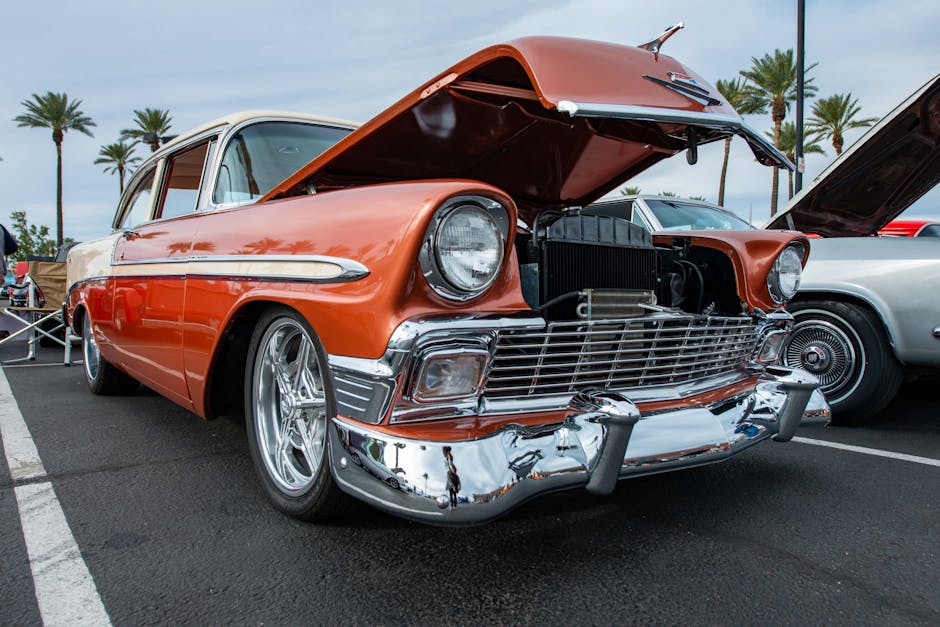What Judges Look For at Antique Car Shows: Insider Tips

Antique car shows are fascinating events where history meets engineering excellence. Enthusiasts gather to admire classic automobiles and engage with like-minded individuals. For participants, these shows are not just about showcasing their prized possessions but also about impressing the judges. Understanding what judges look for can significantly enhance your chances of winning accolades. This article breaks down key criteria and insider tips to help you prepare your antique car for the spotlight.
Authenticity and Originality
One of the primary aspects judges focus on is the authenticity and originality of the vehicle. Cars that retain their original parts and features often score higher. This means maintaining original engines, transmissions, interiors, and even paint colors. It's essential to use factory-correct parts wherever possible.
However, it's not just about having original parts; documentation plays a crucial role too. Providing historical records, such as the original bill of sale, maintenance records, and factory build sheets, can substantiate the car's authenticity.
Judges also appreciate cars that reflect their era accurately. For instance, if your car was built in the 1960s, it should not have modern upgrades that alter its original character. Keeping the car period-correct is vital for scoring high in this category.
Condition and Cleanliness
Another critical criterion is the overall condition and cleanliness of the car. Judges meticulously inspect both exterior and interior conditions. A flawless paint job without chips or scratches, rust-free body panels, and well-maintained chrome are essential.
The interior should be spotless as well, with no stains or tears in the upholstery. Attention to detail matters; even small things like clean door jambs, polished glass, and pristine dashboard gauges can make a difference.
Under the hood, cleanliness is equally important. The engine bay should be free from grease and dirt, with all components appearing well-maintained. Regular detailing and cleaning can help achieve this level of presentation.
Functionality
While appearance is crucial, functionality cannot be overlooked. Judges will check if all aspects of the car work as they should. This includes lights, wipers, horn, radio, and other electrical components.
The engine should start smoothly without unusual noises or excessive smoke. The car should also drive well during any functional tests conducted by judges. Properly working brakes, steering, and suspension systems are vital for good scores in this area.
Ensuring that every part of your car is in good working order shows a commitment to maintaining not just its appearance but also its operational integrity.
Historical Significance
Cars with notable historical significance often capture judges' attention more readily. This could include vehicles that were part of a limited production run, have a unique design feature, or were owned by a famous individual.
Providing a compelling backstory can enhance the appeal of your car. Highlight any interesting facts or historical anecdotes related to your vehicle during the presentation.
A strong narrative combined with verifiable documentation can significantly boost your chances of standing out among other competitors.
Presentation
The way you present your car can also influence judges' opinions. A professional presentation includes well-prepared display boards detailing the car's history, specifications, and restoration process.
Your demeanor matters too; being knowledgeable about your car and engaging with judges in an informative manner reflects well on you as an owner.
- Prepare detailed display boards
- Engage positively with judges
- Showcase documentation effectively
A polished presentation package can create a lasting impression and potentially tip the scales in your favor during close contests.
Attention to Detail
The devil is in the details when it comes to antique car shows. Small elements like correct badges, decals, period-appropriate tires, and even accessories like tool kits can add up to make a significant impact.
| Detail | Importance |
|---|---|
| Badges & Decals | Accurate representation of manufacturer's specifications |
| Tires | Period-appropriate designs enhance authenticity |
| Accessories | Adds value to historical presentation (e.g., tool kits) |
Antique car shows offer an exciting platform to showcase automotive history while celebrating mechanical artistry. Understanding what judges look for—authenticity, condition, functionality, historical significance, presentation skills, and attention to detail—can significantly enhance your chances of earning top honors. Each criterion plays a crucial role in shaping how your vehicle is perceived.
Preparing for these shows involves meticulous care and commitment to preserving your car's heritage. With dedication and an eye for detail, you can impress even the most discerning judges and proudly share your passion for antique automobiles with others.